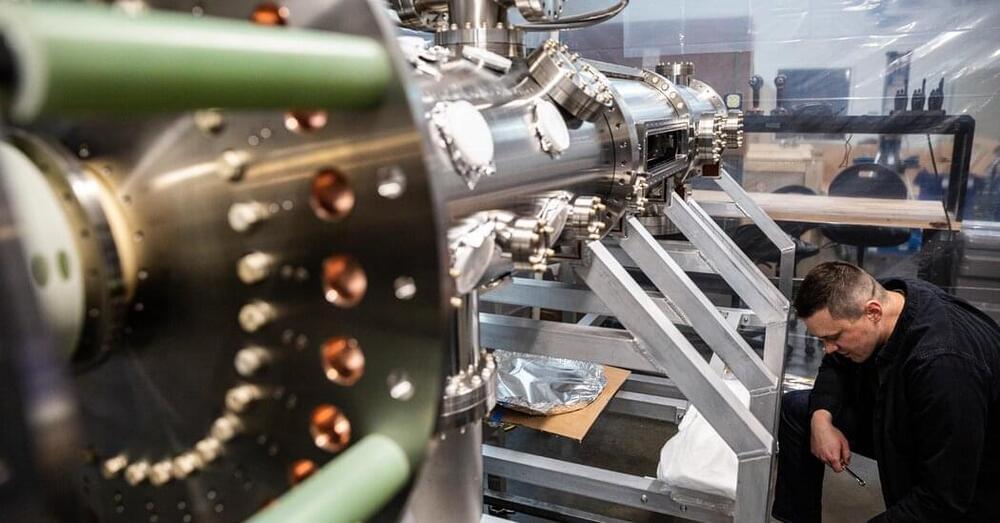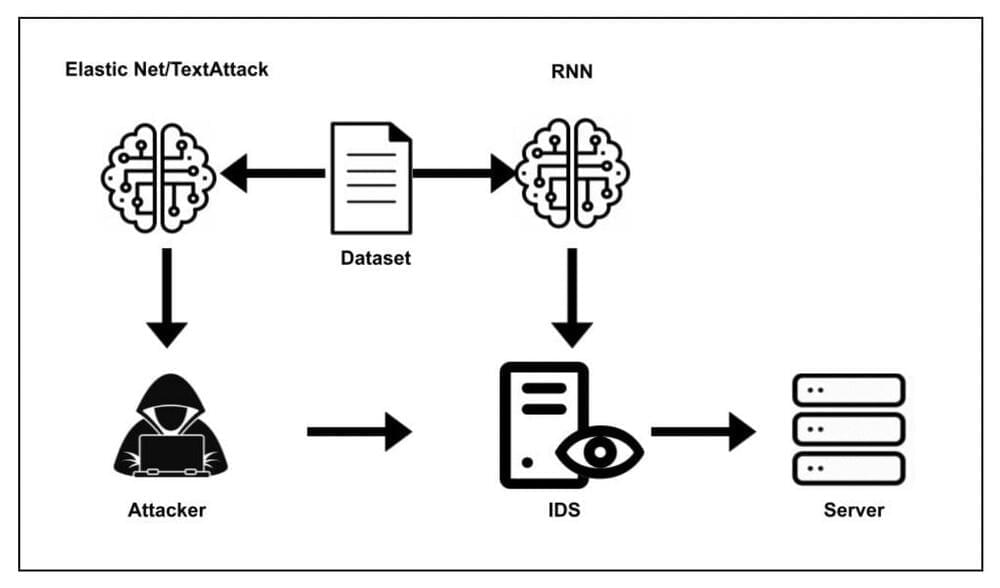Zap Energy said its experimental reactor core was ready for a milestone test. Skeptics routinely question whether the technology is currently possible.


A strain-sensing smart skin developed at Rice University that uses very small structures, carbon nanotubes, to monitor and detect damage in large structures is ready for prime time.
The ‘strain paint’ first revealed by Rice in 2012 uses the fluorescent properties of nanotubes to show when a surface has been deformed by stress.
Now developed as part of a non-contact optical monitoring system known as S4, the multilayered coating can be applied to large surfaces — bridges, buildings, ships and airplanes, for starters — where high strain poses an invisible threat.

In the deep subsurface that plunges into the Earth for miles, microscopic organisms inhabit vast bedrock pores and veins. Belowground microorganisms, or microbes, comprise up to half of all living material on the planet and support the existence of all life forms up the food chain. They are essential for realizing an environmentally sustainable future and can change the chemical makeup of minerals, break down pollutants, and alter the composition of groundwater.
While the significance of bacteria and archaea is undeniable, the only evidence of their existence in the deep subsurface comes from traces of biological material that seep through mine walls, cave streams, and drill holes that tap into aquifers.
Many scientists have assumed that the composition of microbial communities in the deep subsurface is primarily shaped by local environmental pressures on microbial survival such as temperature, acidity, and oxygen concentration. This process, environmental selection, can take years to millennia to cause significant community-level changes in slow-growing communities like the subsurface.
Patients undergo interventions to achieve a ‘normal’ brain temperature; a parameter that remains undefined for humans. The profound sensitivity of neuronal function to temperature implies the brain should be isothermal, but observations from patients and non-human primates suggest significant spatiotemporal variation. We aimed to determine the clinical relevance of brain temperature in patients by establishing how much it varies in healthy adults.
We retrospectively screened data for all patients recruited to the Collaborative European NeuroTrauma Effectiveness Research in Traumatic Brain Injury (CENTER-TBI) High Resolution Intensive Care Unit Sub-Study. Only patients with direct brain temperature measurements and without targeted temperature management were included. To interpret patient analyses, we prospectively recruited 40 healthy adults (20 males, 20 females, 20–40 years) for brain thermometry using magnetic resonance spectroscopy. Participants were scanned in the morning, afternoon, and late evening of a single day.
In patients (n = 114), brain temperature ranged from 32.6 to 42.3°C and mean brain temperature (38.5 ± 0.8°C) exceeded body temperature (37.5 ± 0.5°C, P 0.0001). Of 100 patients eligible for brain temperature rhythm analysis, 25 displayed a daily rhythm, and the brain temperature range decreased in older patients (P = 0.018). In healthy participants, brain temperature ranged from 36.1 to 40.9°C; mean brain temperature (38.5 ± 0.4°C) exceeded oral temperature (36.0 ± 0.5°C) and was 0.36°C higher in luteal females relative to follicular females and males (P = 0.0006 and P 0.0001, respectively). Temperature increased with age, most notably in deep brain regions (0.6°C over 20 years, P = 0.0002), and varied spatially by 2.41 ± 0.46°C with highest temperatures in the thalamus. Brain temperature varied by time of day, especially in deep regions (0.86°C, P = 0.0001), and was lowest at night. From the healthy data we built HEATWAVE—a 4D map of human brain temperature.

Deep learning techniques have recently proved to be highly promising for detecting cybersecurity attacks and determining their nature. Concurrently, many cybercriminals have been devising new attacks aimed at interfering with the functioning of various deep learning tools, including those for image classification and natural language processing.
Perhaps the most common among these attacks are adversarial attacks, which are designed to “fool” deep learning algorithms using data that has been modified, prompting them to classify it incorrectly. This can lead to the malfunctioning of many applications, biometric systems, and other technologies that operate through deep learning algorithms.
Several past studies have shown the effectiveness of different adversarial attacks in prompting deep neural networks (DNNs) to make unreliable and false predictions. These attacks include the Carlini & Wagner attack, the Deepfool attack, the fast gradient sign method (FGSM) and the Elastic-Net attack (ENA).
A strain-sensing smart skin developed at Rice University that uses very small structures, carbon nanotubes, to monitor and detect damage in large structures is ready for prime time.
The “strain paint” first revealed by Rice in 2012 uses the fluorescent properties of nanotubes to show when a surface has been deformed by stress.
Now developed as part of a non-contact optical monitoring system known as S4, the multilayered coating can be applied to large surfaces—bridges, buildings, ships and airplanes, for starters—where high strain poses an invisible threat.

A new computer algorithm developed by the University of Toronto’s Parham Aarabi can store and recall information strategically—just like our brains.
The associate professor in the Edward S. Rogers Sr. department of electrical and computer engineering, in the Faculty of Applied Science & Engineering, has also created an experimental tool that leverages the new algorithm to help people with memory loss.
“Most people think of AI as more robot than human,” says Aarabi, whose framework is explored in a paper being presented this week at the IEEE Engineering in Medicine and Biology Society Conference in Glasgow. “I think that needs to change.”
SpaceX’s CRS-25 mission is set to lift off atop a Falcon 9 rocket from launchpad 39-A at the Kennedy Space Center in Cape Canaveral, Florida. Launch is targeted for 8:44 p.m. EDT (00:44 UTC), Friday, July 14. The Dragon spacecraft will deliver new science investigations, supplies, and equipment for the international crew, including an image spectrometer to be mounted on the exterior of the station to better understand how dust plumes affect our climate, and a study of immune aging and potential for reversing those effects. It also will carry an investigation from a team of students at Stanford University that will test the process of creating biopolymer soil composite, a concrete alternative, in microgravity. https://www.nasa.gov/mission_pages/station/research/news/spa…highlights.
Credit: NASA
#EMIT #ClimateChange #EarthScience #NASA #ISS #JPL


“NGS experts believe these materials were applied ahead of an exhibition in the early twentieth century,” the organization said in a press release. “Van Gogh often re-used canvases to save money. However, instead of painting over earlier works, he would turn the canvas around and work on the reverse.”
The portrait shows “a bearded sitter in a brimmed hat with a neckerchief loosely tied at the throat,” NGS says. The portrait has an intense stare, and the right side of his face is in shadow, while his left ear is clearly visible.